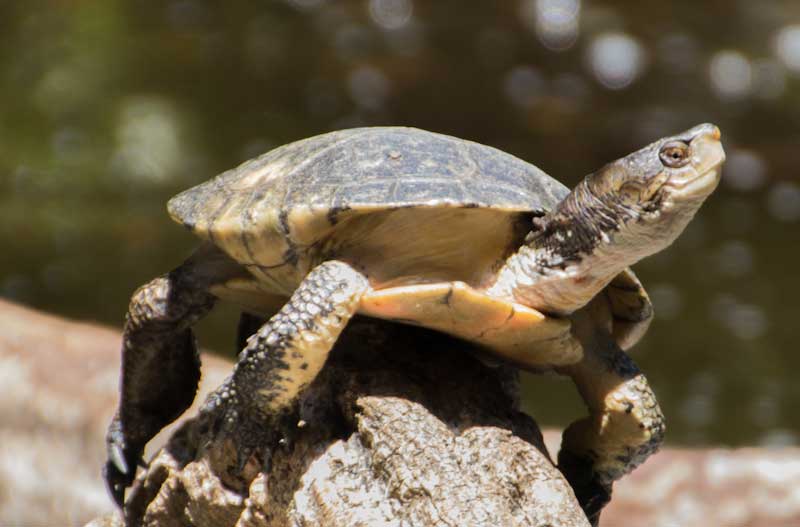Animals
Western Pond Turtle

This animal can be observed in CuriOdyssey's Garden Aviary.
Latin Name
Actinemys marmorata
History at CuriOdyssey
CuriOdyssey houses two western pond turtles. The male turtle was found in San Jose and housed with non-native turtles so he could not be released back into the wild. The female turtle was dropped off at the Santa Clara Humane Society with no information on her history. Without knowing where she came from, she could not be released back into the wild. Both turtles were donated to CuriOdyssey in 1999."
Fun Facts about Western Pond Turtles
Western pond turtles, also known as Pacific pond turtles, in northern regions of their range, appear to hibernate on the bottom of ponds in winter months. In southern regions they remain active year-round.
What do Pond Turtles eat?
Western pond turtles consume pods of yellow lily, water plants, insects, fish, worms, crustaceans, and carrion. At CuriOdyssey, they are served smelt, aquatic plants and algae, worms, turtle pellets.
How long do Pond Turtles live?
In the Wild: up to 40 years
In Captivity: 50-70 years
Where do Pond Turtles live?
Western pond turtle's habitats includes ponds, marshes, and streams, often seen basking on logs and mud banks. They range from Southwestern British Columbia to northwestern Baja California.
Are Western Pond Turtles endangered?
The U.S. Fish & Wildlife consider the Western pond turtle a species of special concern, and California state law protects them. The northern populations have virtually disappeared in some ranges.
SPONSOR AN ANIMAL
Help provide for the care and feeding of our wildlife guests by sponsoring an animal of your choice for a year.
Join the CuriOdyssey Community
LOCATION
1651 Coyote Point Drive
San Mateo, CA 94401
Ohlone Land Acknowledgement
650-342-7755
info@curiodyssey.org
CuriOdyssey is a 501(c)(3) non-profit, Tax ID 94-1262434

